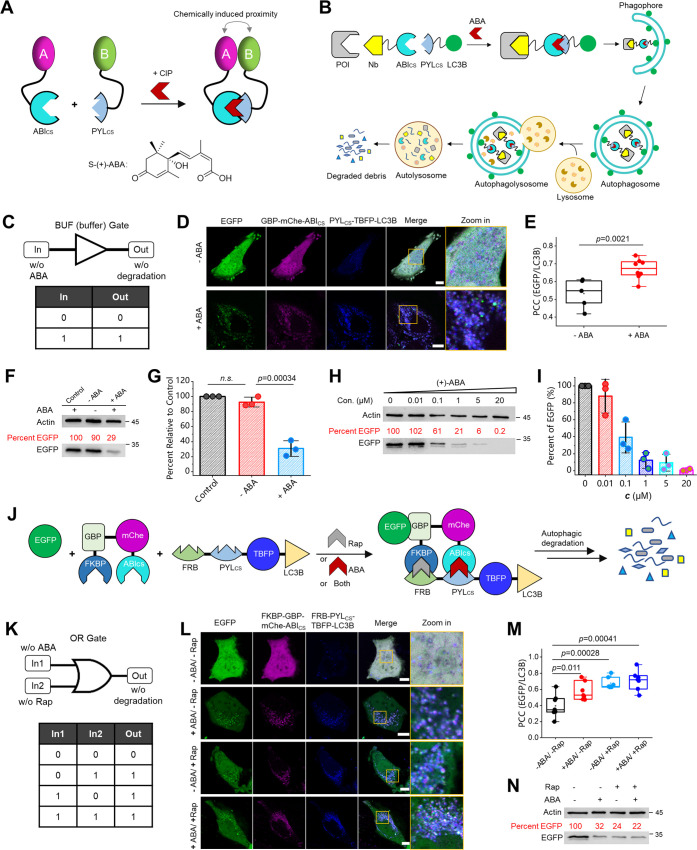Figure 4.
Establishment of logic-gated and tunable degradation systems by integrating CIPs with ATNC: (A) Schematic representation of the ABA-based CIP system and the chemical structure of the CIP inducer (+)-ABA. (B, C) Schematic representation of CIP-integrated ANTC that enables buffer (BUF) gated degradation solely depending on the input of ABA. (D) Live HeLa cells coexpressing EGFP, GBP-mCherry-ABIcs, and PYLcs-TBFP-LC3B (TBFP: mTagBFP2) with or without adding ABA (20 μM, 1.5 h, then wash) were imaged 22.5 h after ABA addition. (E) PCC colocalization analysis between EGFP and PYLcs-TBFP-LC3B with (n = 8 cells) or without (n = 5 cells) adding ABA. (F) WB analysis (48 h) of the control (EGFP only) sample and other cell lysate samples with or without adding ABA (20 μM, 1.5 h, then wash). (G) Statistical quantification of WB results (n = 3 experiments). (H) Live HeLa cells coexpressing EGFP, GBP-mCherry-ABIcs, and PYLcs-TBFP-LC3B were added with gradient concentrations of ABA for 48 h, and the cell lysate was subjected to WB analysis. (I) Statistical quantification of WB results (n = 3 experiments). (J, K) The design of an OR gated degradation system using the mutually orthogonal ABA (ABIcs/PYLcs) and Rap (FKBP/FRB)-based CIPs, which enables OR degradation in the presence of ABA (20 μM), Rap (10 nM), or both. (L) Representative confocal micrographs (24 h) of OR gated degradation. (M) PCC colocalization analysis (n = 7 cells). (N) Representative WB results (48 h). One-sided Student’s t-test was used; n.s.: nonsignificant; see Methods section for description of box plots; bar graphs: mean ± SD; mChe: mCherry.

